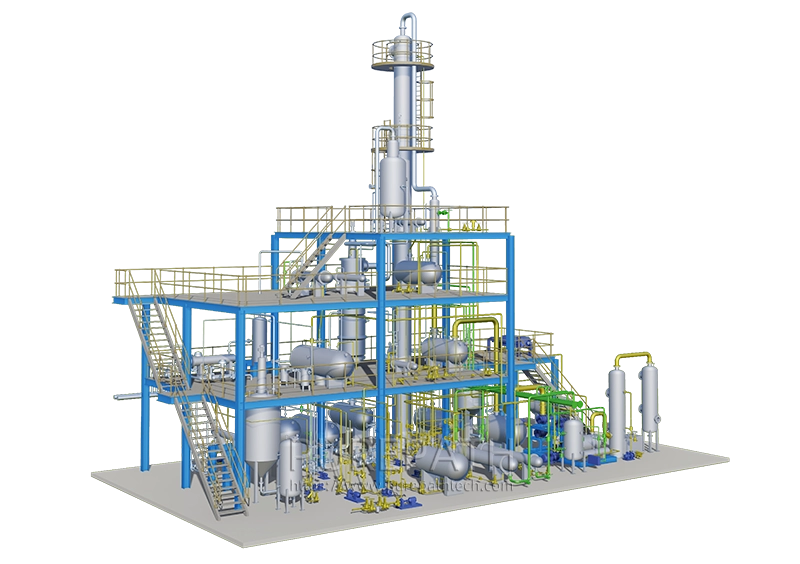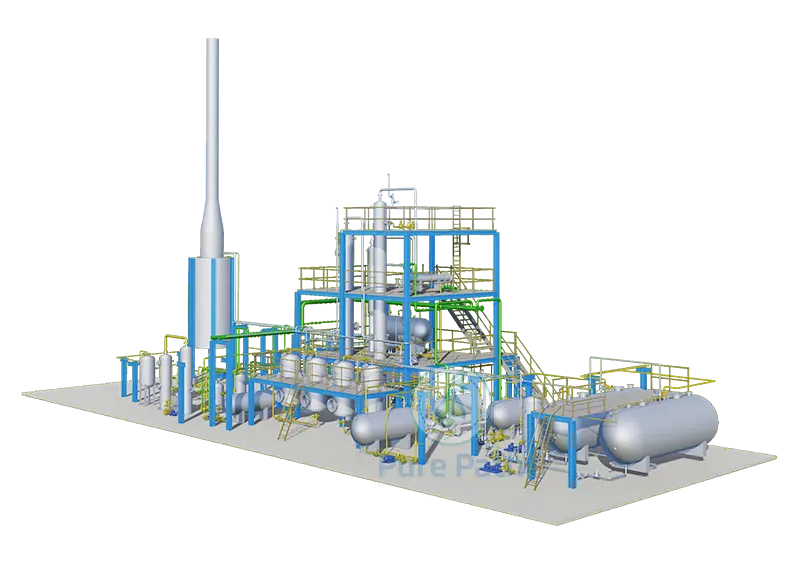Differences in Waste Oil to Diesel and Base Oil Conversion
Advanced recycling and conversion technologies can transform waste oil into diesel and base oil. This technique not only helps reduce our dependence on fossil fuels but also promotes a circular economy by recycling waste materials and minimizing pollution. However, converting waste oil into diesel and base oil involves two fundamentally different processes with distinct purposes, methodologies, and end products.
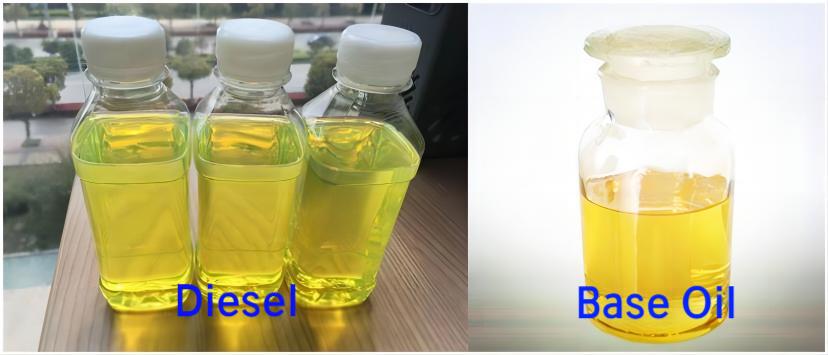
Differences in Conversion Purpose and Process
The primary difference between converting waste oil into diesel and base oil lies in the purpose of each process. These differences in intent also shape the specific techniques used in each method of recycling.
1. Waste Oil to Diesel
The conversion of waste oil to diesel focuses on the regeneration of energy. Diesel fuel, widely used in transportation, agriculture, and industry, can be produced from waste oils, such as used motor oil, cooking oil, and animal fats. The primary goal of this process is to create a bio-based alternative to traditional fossil diesel, known as biodiesel. Biodiesel can be used directly in diesel engines or blended with conventional diesel to reduce environmental impact.
Process: The transformation of waste oil into biodiesel typically involves a chemical reaction known as transesterification. This reaction occurs between the triglycerides found in waste oils and alcohols (such as methanol or ethanol), facilitated by a catalyst. The resulting product is fatty acid methyl ester (FAME), which forms the main component of biodiesel, along with glycerin, a byproduct of the process.
Steps:
- Reaction: In the presence of a catalyst (commonly sodium hydroxide, potassium hydroxide, or sulfuric acid), the triglycerides in the waste oil react with alcohol to form biodiesel and glycerin.
- Catalyst selection: The choice of catalyst depends on the scale and nature of the production process. Industrial-scale biodiesel production often uses alkaline catalysts like sodium hydroxide due to their cost-effectiveness and efficiency. For smaller-scale or more environmentally friendly production, enzyme-based catalysts such as lipases may be preferred, as they operate under milder conditions and are biodegradable.
- Purification: After the transesterification reaction, the crude biodiesel must undergo purification to remove impurities and excess reactants, resulting in a cleaner and more efficient fuel.
This process, when done properly, enables waste oil to be repurposed into a renewable energy source that burns cleaner than fossil fuels and can be used in a wide range of applications, from transportation to power generation.
2. Waste Oil to Base Oil
The conversion of waste oil into base oil is focused on producing a material suitable for industrial and automotive lubrication. Base oil serves as the foundation for lubricants used in everything from car engines to heavy machinery, hydraulic systems, and gear mechanisms. The primary goal of this process is to remove contaminants and improve the quality of the waste oil so that it meets the stringent requirements necessary for lubricants.
Process: Converting waste oil into base oil involves a series of physical and chemical processes to remove impurities such as water, acids, pigments, wax, aromatic hydrocarbons, and sulfur compounds. This refining process is more intricate than that of biodiesel production due to the need for high-purity base oil with specific performance characteristics.
Steps:
- Dehydration: The first step in refining waste oil into base oil involves removing water. This can be accomplished through heating, vacuum distillation, or chemical methods. Water can cause rusting, corrosion, and other issues in machinery, so its removal is critical.
- Neutralization (De-acidification): Waste oil often contains acidic substances that can compromise its stability. By adding an alkaline agent, the acids in the oil are neutralized, improving the oil’s overall quality and extending its shelf life.
- De-waxing: This process involves removing high-melting-point waxes from the oil to improve its low-temperature performance. De-waxing ensures that the oil remains fluid even in cold conditions, making it suitable for a wider range of industrial and automotive applications.
- De-aromatization and De-sulfurization: The removal of aromatic hydrocarbons and sulfur compounds is crucial for improving the oil’s oxidation resistance and thermal stability. These contaminants can lead to the degradation of lubricants under high temperatures and pressures, reducing their effectiveness. Chemical treatments like catalytic cracking and hydrotreatment are used to remove these compounds and enhance the base oil’s quality.
By following these refining steps, waste oil is transformed into a high-quality base oil that can be used to produce a variety of lubricants essential for industrial operations.
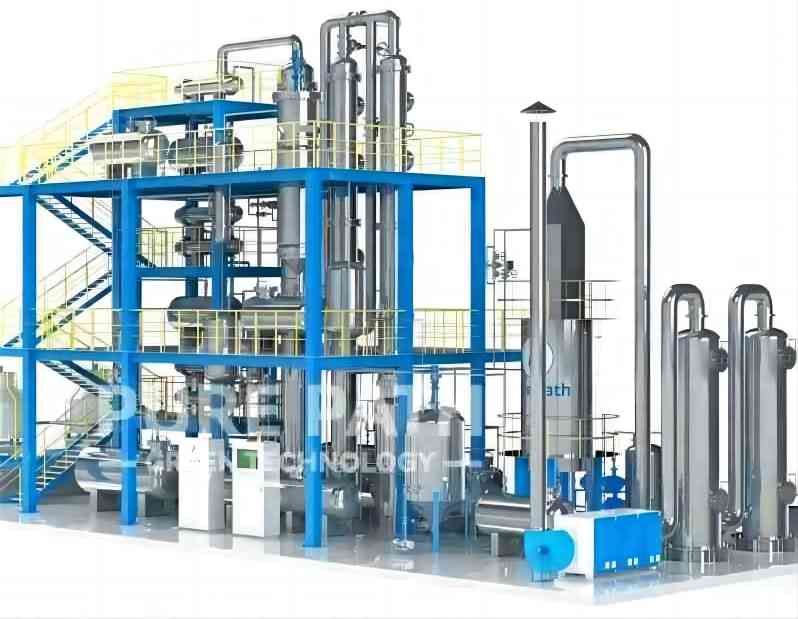
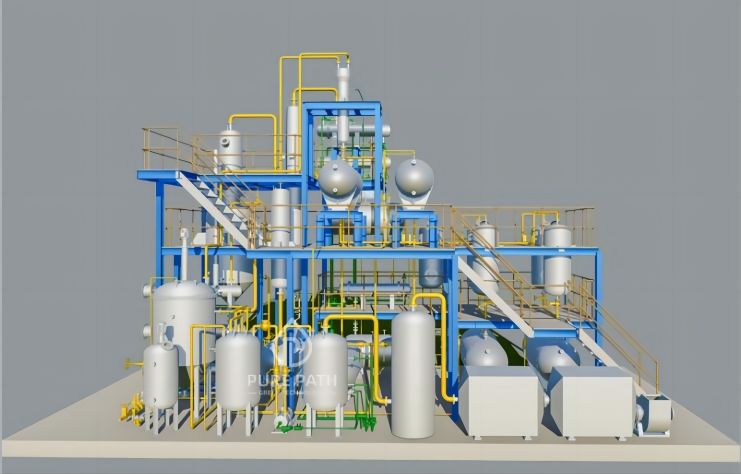
Differences in Characteristics and Uses of Final Products
Once the waste oil is converted into either diesel or base oil, the resulting products have distinctly different characteristics and uses based on their chemical composition and physical properties.
1. Diesel: Characteristics and Uses
The biodiesel produced from waste oil through transesterification is a renewable fuel with several environmental and performance advantages. Its characteristics make it a suitable alternative or complement to traditional fossil-based diesel.
Characteristics:
- High energy density: Biodiesel has a similar energy content to conventional diesel, making it a viable replacement in diesel engines without sacrificing performance.
- Good combustion properties: Biodiesel burns efficiently and cleanly, with fewer harmful emissions compared to fossil diesel.
- Environmentally friendly: One of the primary benefits of biodiesel is its lower greenhouse gas emissions. When burned, biodiesel releases less carbon dioxide, sulfur dioxide, and particulate matter into the atmosphere, contributing to reduced air pollution and climate change mitigation.
Uses:
- Biodiesel is widely used as a fuel in diesel engines found in vehicles, agricultural machinery, construction equipment, and power generators.
- It can be used as a standalone fuel or blended with traditional diesel to create a mixed fuel with a lower carbon footprint.
- Biodiesel’s environmental benefits and compatibility with existing diesel infrastructure make it a promising solution for reducing reliance on fossil fuels in the transportation and industrial sectors.
2. Base Oil: Characteristics and Uses
In contrast to biodiesel, the base oil produced from waste oil is primarily used in industrial applications as a foundational component for lubricants. These lubricants are critical for reducing friction, preventing wear, and improving the efficiency of machinery.
Characteristics:
- Superior lubrication properties: Base oil has excellent lubricating properties, reducing friction and wear between mechanical parts, which helps extend the lifespan of equipment.
- High thermal stability: Base oil remains stable at high temperatures, making it suitable for use in machinery that operates under extreme conditions.
- Oxidation resistance: The refining process enhances the oil’s resistance to oxidation, which is essential for maintaining the performance of lubricants over time and preventing the formation of harmful byproducts.
- Wide range of viscosities: Base oils can be formulated with different viscosities to meet the needs of various industrial applications, from light lubricants for precision machinery to heavy-duty oils for large engines and gear systems.
Uses:
- Automotive lubricants: Base oil is the primary component of engine oils, transmission fluids, and gear oils used in vehicles.
- Industrial lubricants: Base oil is used in the formulation of lubricants for heavy machinery, hydraulic systems, and gear mechanisms in a variety of industries, including manufacturing, construction, and energy production.
- Specialty products: In addition to lubricants, base oil is also used to create hydraulic fluids, coolants, and other specialty products that help maintain the functionality of machinery and equipment.
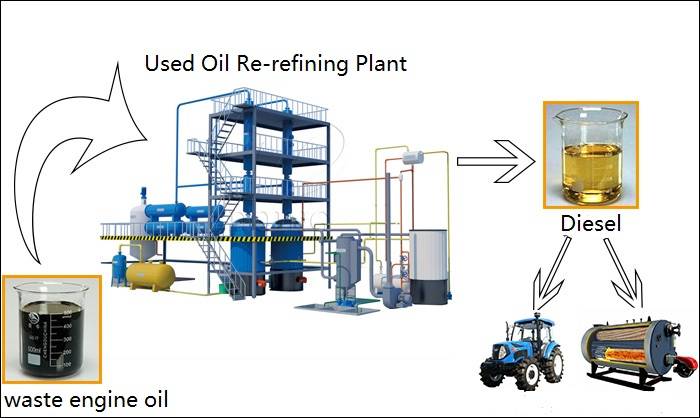
Above all, the waste oil to diesel and base oil conversion differences mainly reflected in the transformation of the purpose, process, and characteristics of the final product and purposes. The former focuses on energy substitution and recycling, while the latter focuses more on improving the quality of waste oil, making it play an important role in the field of industrial lubrication. Both conversion methods are important ways to recycle waste oil, which is of great significance to promote sustainable development and reduce environmental pollution.



